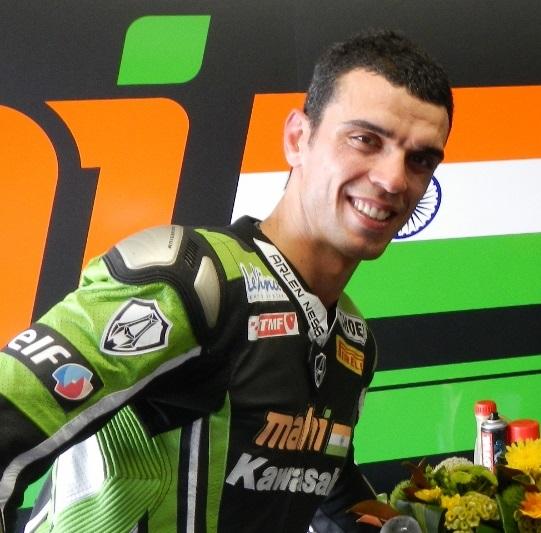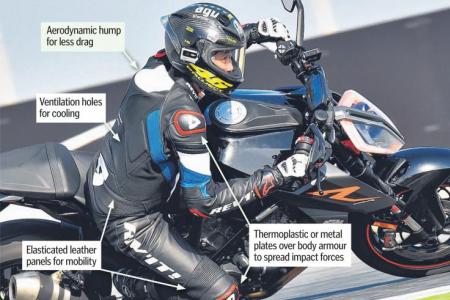Biker Boy: Finding the right racing leathers
What to look for in racing leathers
Does your favourite racing leather suit look as if it has survived one too many crashes?
Are the seams on your suit starting to come apart?
If the answer to any of those questions is yes, now is the time to hunt for a new set of leathers.
It is no secret that riding apparel distributors are currently giving generous discounts to clear old stock.
But what do you look for in a leather suit?
First, the suit has to fit you like a glove.
This is important as the suit will be a second skin that protects you in a crash and when you find yourself sliding uncontrollably on the circuit's tarmac or gravel.
An ill-fitting suit - too loose or too tight - will have consequences.

When you don a baggy suit, the in-built protective armour on the knees, elbows and shoulders may shift and not take the impact like how they're designed to.
DISCOMFORT
Too tight, the discomfort will restrict body movements and limit your ability to add extra protection like back or chest protectors.
Suits generally weigh from 5.5kg to 8kg and are made of abrasion-resistant cowhide.
Lighter racing suits, made of thin yet stronger kangaroo skin, costs more.
Here, prices for a basic racing suit start at about $1,200 and skyrocket to above $5,000 for a made-to-measure one or a suit with a smart airbag system.
You need to try one on to know if you're comfortable with the fit and style.
Newbies, you will find the experience of wearing a suit strange as you wrestle your way into one. An inner liner will help you get into a suit easier.
Wearing a suit may feel awkward, but it will all make sense when you're crouched in that racing position.
You will commonly find hard plastic, or what I call slide-friendly metal plates, in vulnerable areas.
In a fall, the idea is to "slide" away or spread out the impact to other parts of your body.
Manufacturers employ neoprene in areas such as the groin, back of knees and armpits for more comfort.
In sections where protection and mobility are essential, including the top of knees and the sides of your body, designers use elasticated leather panels similar in look to an accordion.
VULNERABLE
Choose a suit without seams in vulnerable areas, such as the buttocks, and ensure ventilation holes do not come too close to stitched leather panels.
These might come apart in a fall to expose bare skin.
But, if you ask five-time Supersport World champion Kenan Sofuoglu what he thinks is important in a leather suit, he will tell you "holes".
The Turkish rider, who bagged his latest championship title this year for Kawasaki, spoke to The New Paper on Thursday in a telephone interview.
Sofuoglu, 32, said: "The ventilation holes allow for cooler temperatures inside my kangaroo-skin suit.
"If my core temperature gets too hot, I will get arm pump (when an individual develops pain in the forearms after exertion) and lose a lot of water through sweating.
"I feel less tired if my body is cooler."
Sofuoglu, who will be remembered for his record 400kmh feat on the Izmit bridge in Turkey on a Kawasaki Ninja H2R in June this year, said suits are a must when riding at high speeds.
His worst crash was in 2008 when he had a 240kmh collision with "Roman Emperor" Max Biaggi at a World Superbike round in Mugello.
Sofuoglu was thrown off his handlebar and landed on his back. His suit was damaged, and he had some back injuries.
Get The New Paper on your phone with the free TNP app. Download from the Apple App Store or Google Play Store now



